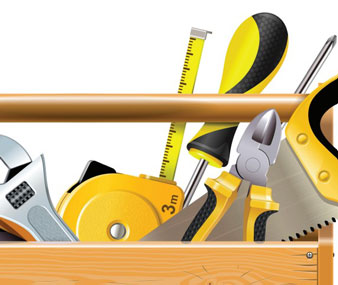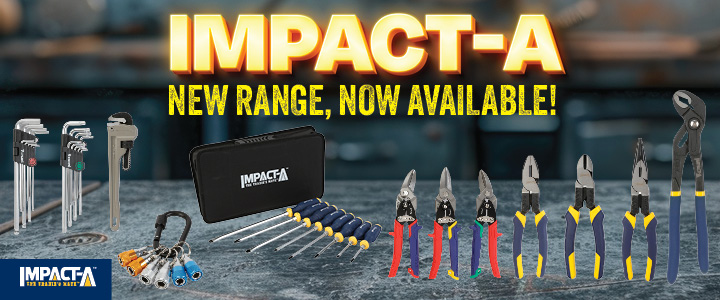Tool theft is a big problem for tradies, and it’s more common than ever. Here’s how to keep your tools safe and why insurance is a must-have for everyone.
By Angela Tufvesson
Whether you’re a sole trader or larger contractor, tool theft can have a huge impact on your bottom line. Tools are expensive to buy and replace, and if tools go missing you can’t do your job. It’s as simple as that. Learning how to keep your tools safe and having the appropriate insurance in place should they get nicked, is one of the simplest and most effective strategies to keep your business in business.
SCALE OF THE PROBLEM
Worryingly, tool theft is on the rise, with opportunistic thieves targeting expensive gear like grinders, impact drivers, hammer drills, circular saws and extension ladders. Some tools are swiped from site, but most thefts occur at home in the cover of darkness, says Jennifer Steger from trades insurance broker Trade Risk. “Most of the claims we see come through theft from people’s vehicles in the areas where they’re going home at night,” she says. “We’re seeing quite an increase across the board.”
In Victoria alone, Neighbourhood Watch has reported more than $44m worth of tool theft in a single year. There are even reports of power tools worth as much as $80,000 being stolen from individual properties. Because much of the stolen property is industry specific, thieves usually look to onsell through second-hand equipment stores or online marketplaces.
DETERRING THIEVES
So, what can you do to ward off thieves? Tool theft is often opportunistic, so if you don’t provide those opportunities, you’re less likely to get hit, says Steger. “The more layers of security, the more layers a potential burglar needs to overcome to steal tools.”
If you have a garage, always park your vehicle inside it. If you don’t, or your vehicle is too large, imar, which specialises in insurance for tradies, recommends storing individual tools inside your garage or home as much as possible when you’re not at work. If that’s not possible—or, let’s be honest, practical after a long day—make sure
your vehicle has a working alarm and locks. Check it often to make sure it’s secure. Storing smaller tools in a toolbox with a hard-to-pick lock adds another layer of security.
When you’re onsite taking tools in and out of your vehicle, enlist a buddy. “Having someone at the vehicle at all times, rather than it being open and left for somebody to come along and take stuff without you noticing, is an effective deterrent,” says Steger. Heavy duty, lockable site boxes from companies like One Eleven can help to keep tools safe on site.
Clever tech solutions can also make it easier to protect your tools. Master Lock’s bluetooth-enabled smart padlocks turn your phone into a smart key, eliminating the need for keys or forgettable combinations. Bluetooth equipment trackers, like Milwaukee Tool’s One-Key, help you to keep track of tools on site.
Putting your name on tools won’t necessarily prevent theft, but it can increase the chances of recovery. Police recommend having your driver’s licence number engraved on your tools, which they can use to find your name and address and return your stolen tools faster.
INSURING YOUR LOT
If you’re unlucky enough to be a victim of tool theft, insurance can cover the cost of replacements. Tool insurance, that is. According to experts, many tradies insure their vehicle but neglect the tools in the back.
According to imar, a basic tool insurance policy usually covers theft, loss or damage of tools that are kept in your vehicle, on site, in locked boxes or at home. Crucially, most policies will only pay out if there are signs of forced entry— so if you leave your vehicle unlocked and your tools are stolen, you won’t be covered.
Steger recommends choosing a ‘like for like’ policy that will cover the full replacement cost of your tools, regardless of how recently you made the purchases. “If you acquired a chainsaw 10 years ago and you buy a brand new one after the theft, the policy is going to respond to the full replacement value for the new items.”
Processing a claim is a lot easier if you can tell the insurer exactly what you’re claiming for, and most companies will ask to see proof of ownership—of every single tool. “It’s really helpful to have an itemised list of all your items with photographs, as well as receipts if you’ve got them, and keep adding to it every time you buy something,” Steger advises. “If you need to make a claim, you’ve got the information ready to go.”
Apps like Tool Protect help to simplify this process, as do collating photos, serial numbers and receipts for all your tools—which also aids identification if your tools are recovered.
Insurance can be a confusing area to navigate, so don’t be afraid to ask questions. Make sure you know exactly what you’re getting before signing on that dotted line. “It’s important to understand how your policy will respond to make sure that you’re happy with that level of coverage,” Steger says.






